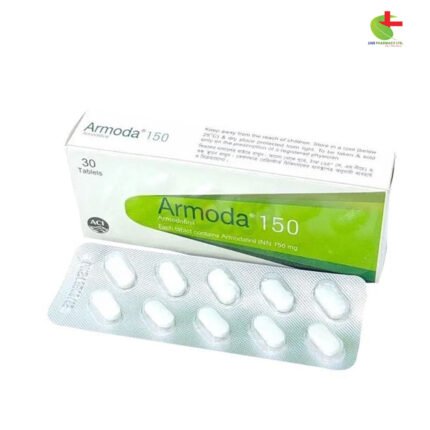Coport M
220.00৳ Strip(10)
- Coport-M is a combination of Empagliflozin and Metformin Hydrochloride for managing type 2 diabetes.
- It helps control blood sugar by inhibiting glucose reabsorption in the kidneys and improving insulin sensitivity.
- Recommended for use alongside diet and exercise, and may be taken with other diabetes medications.
- The dosage should be individualized, with gradual escalation to minimize gastrointestinal side effects.
 Brand
Brand
|
ACI Limited |
|---|---|
 Generics
Generics
|
Empagliflozin + Metformin Hydrochloride |
 Type
Type
|
Tablet |
Indications
This tablet is prescribed for adult patients with type 2 diabetes mellitus as an addition to diet and exercise to improve glycemic control:
- For patients inadequately managed on the highest tolerated dose of Metformin alone.
- In combination with other diabetes medications for patients who remain uncontrolled on Metformin and these additional therapies.
- For those already taking Empagliflozin and Metformin as separate tablets.
Please take medication strictly under the guidance of a registered physician.
Pharmacology
Empagliflozin:
A selective Sodium-Glucose Co-Transporter 2 (SGLT2) inhibitor, Empagliflozin prevents the reabsorption of glucose in the kidneys, lowering the renal glucose threshold. This leads to increased excretion of glucose through urine, thereby reducing blood sugar levels.
Metformin Hydrochloride:
Belonging to the biguanide class, Metformin is an oral antihyperglycemic agent. It lowers basal and postprandial plasma glucose levels by reducing hepatic glucose production, improving insulin sensitivity, and enhancing peripheral glucose uptake and utilization. Unlike other agents, it does not cause hypoglycemia.
Dosage & Administration
Dosage should be personalized according to the patient’s response and tolerability. Take this combination twice daily with meals to minimize gastrointestinal side effects associated with Metformin. The maximum recommended daily doses are:
- Metformin Hydrochloride: 2000 mg
- Empagliflozin: 25 mg
Starting Dose Recommendations:
- For patients on Metformin, switch to a combination containing Empagliflozin 5 mg with an equivalent daily dose of Metformin.
- For patients on Empagliflozin, switch to a combination containing Metformin 500 mg with an equivalent daily dose of Empagliflozin.
- Patients already using both drugs separately should transition to the combination with the same daily doses.
- For those with volume depletion, address this condition before starting treatment.
Special Populations:
- Renal Impairment: Not recommended for patients with an eGFR <45 mL/min/1.73 m².
- Pediatrics: Safety in patients under 18 years of age has not been established.
Interactions
- Diuretics: May increase the risk of dehydration and volume depletion.
- Insulin or Insulin Secretagogues: Elevates the risk of hypoglycemia.
- Drugs Reducing Metformin Clearance: Examples include ranolazine and cimetidine, which may heighten Metformin accumulation.
- Carbonic Anhydrase Inhibitors: Can elevate the risk of lactic acidosis.
- Alcohol: Excessive intake can potentiate lactic acidosis risk.
Contraindications
- Hypersensitivity to Empagliflozin or Metformin
- Acute metabolic acidosis (e.g., lactic acidosis, diabetic ketoacidosis)
- Severe renal impairment (GFR <30 mL/min)
- Conditions that may cause tissue hypoxia or renal function decline
- Liver dysfunction or alcohol intoxication
Side Effects
Common adverse effects:
- Empagliflozin: Urinary tract infections, genital infections.
- Metformin: Diarrhea, nausea, vomiting, abdominal discomfort, and headache.
Less common effects:
- Hypoglycemia (when combined with insulin), dehydration, rash, or dysuria.
- Rare but serious: Diabetic ketoacidosis.
Precautions & Warnings
- Lactic Acidosis: Monitor for symptoms and seek immediate medical attention if suspected.
- Hypotension: Correct volume status in at-risk populations before starting therapy.
- Kidney Function: Temporarily discontinue in settings of fluid loss or reduced oral intake.
- Genital Infections: Higher risk with SGLT2 inhibitors—monitor for symptoms.
- Vitamin B12 Deficiency: Regularly check hematologic parameters.
Overdose Management
In case of overdose, lactic acidosis is the primary concern and requires urgent hospital treatment. Haemodialysis is effective in removing Metformin, though its impact on Empagliflozin elimination remains unstudied.
Storage Instructions
Store below 30°C in a cool, dry place away from direct light. Keep out of reach of children.













Reviews
There are no reviews yet.